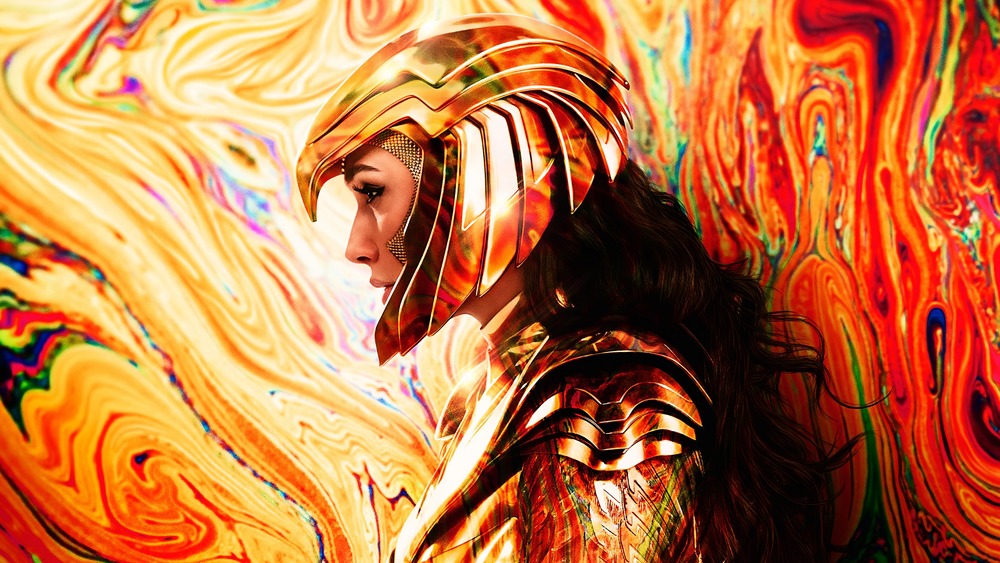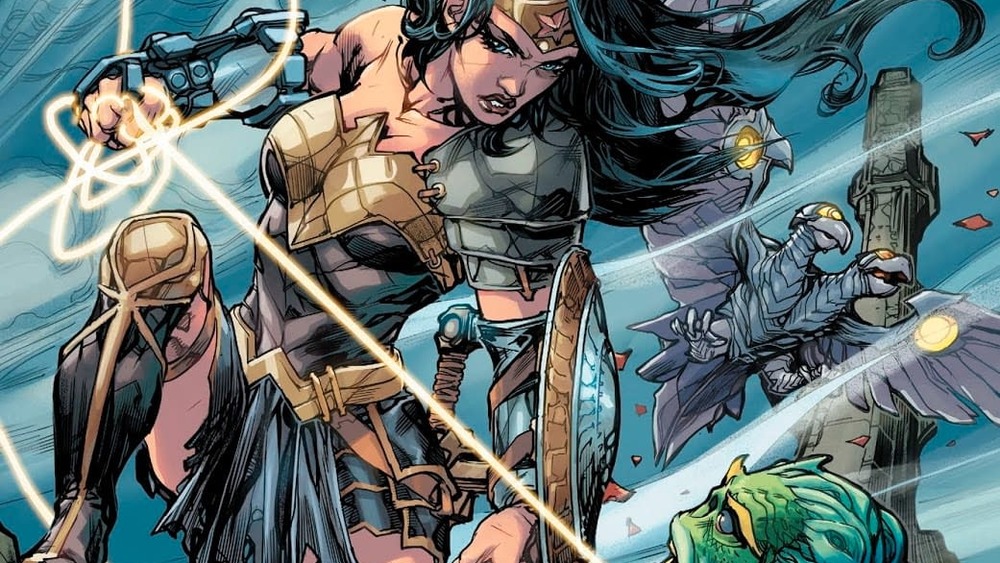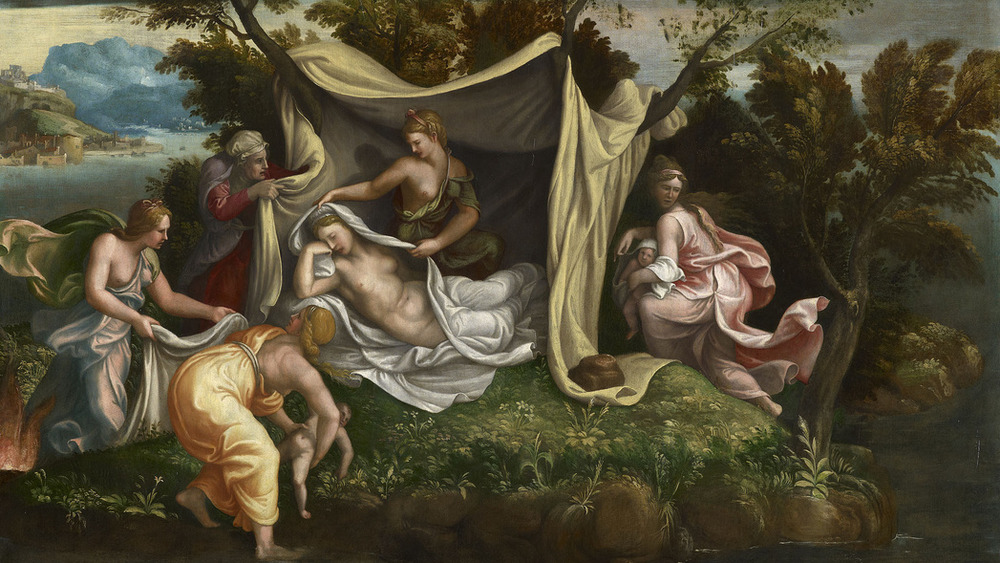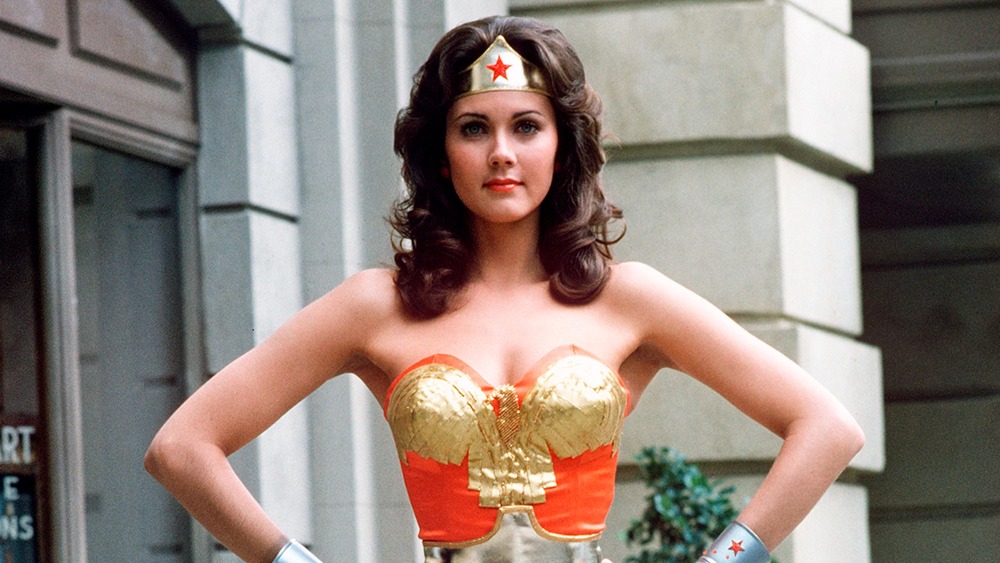Wonder Woman 1984: Who Is Asteria?
Contains spoilers for Wonder Woman 1984
Who, exactly, is Asteria?
While the release of Wonder Woman 1984 has certainly left people asking a lot of questions, the backstory of Asteria is toward the top of the list. Who is the mysterious Amazon who saves a young woman in the mid-credits scene of the film? In order to answer that question, we need to come at it from three unique angles. The first thing we need to discuss is where Asteria fits into the narrative of Wonder Woman — who is she, in regard to Wonder Woman 1984, specifically? How does Asteria relate with Princess Diana (Gal Gadot)? Has there ever been a mention of Asteria in the pages of Wonder Woman comics before?
The second thing we need to discuss, then, is real-life mythological relevance. Who is Asteria based on? What is her connection to Greek mythology? How does that mythology connect to that of the fictional Amazons who live on the island of Themyscira?
Finally, the third thing we have to talk about is who plays Asteria. What is the actor's name? How is she relevant to Wonder Woman? Does the actor's past suggest that Asteria may appear in future Wonder Woman movies?
Here is everything you need to know about Asteria, so far.
Asteria's comic book origins — or lack thereof — explained
In Wonder Woman 1984, While Diana and Steve Trevor (Chris Pine) are struggling to stop the seemingly unstoppable Maxwell Lord (Pedro Pascal), Steve happens upon a suit of armor in the corner of one of Diana's rooms. When Steve asks what the deal is with the armor, Diana shows him — using the Lasso of Truth — a vision of where the armor comes from, and who its wearer is. In the DCEU continuity, the Amazons escaped man's world to Themyscira, but not before men waged war on them. While Queen Hippolyta (Connie Nielsen) led the Amazons to safety, one woman stayed behind to guard their back exit: Asteria. The Amazons sacrificed all their armor to create a new suit that was strong enough to defend Asteria from the entire world.
It seems that sometime between the events of Wonder Woman and Wonder Woman 1984, Diana searches for Asteria, but only finds her armor.
This is a case where the movies are branching away from the source material, because while the comics have offered multiple stories about how the Amazons made Themyscira their home, Asteria has never been a major presence. In fact, the only mention of a human character with that name appears in an Elseworlds title from 1998 where Supergirl and Batgirl go to Earth 1098: Asteria has one page of dialogue and it tells us absolutely nothing about her character other than that she is a part of that universe's Justice Society.
The only other Asteria is a two-headed metal bird, as seen flying behind Diana in the image above, found in the pages of the "Drowned Earth" storyline. Here, Diana claims to have found the bird on a reef, and named her after "an ancient sister who fought against the gods."
So if we want to understand Asteria, the comics aren't going to help us here. What about actual history?
Asteria: Greek Titaness
Asteria may not have an extensive backstory in DC Comics, but she is a character of some interest if you happen to care about the Greek poet Hesiod's interpretation of the gods. According to Hesiod, Asteria is one of the daughters of two Titan siblings Coeus and Phoebe. The Titans are basically the "pre-gods," or the beings who came before Zeus, Hera, Apollo, Athena, and all the other Greek gods most of us are familiar with. On the topic of Zeus, you may recall that he has a tendency to try and hook up with as many goddesses as possible. And, yes, as though you had to ask, Asteria was on the list of Zeus' would-be conquests. However, according to mythology, Asteria escaped Zeus' amorous intentions by transforming into a quail, flying to the ocean, and then transforming again into an island.
There are versions of Asteria's story that involve Poseidon getting into the mix, and, in many versions, Asteria (as an island) is a safe haven for her sister Leto, who (wouldn't you know it) Zeus fooled around with.
Most interesting to the world of Wonder Woman, however, is the version of Asteria's story where it turns out she is the mother of divine hero Heracles, by way of Zeus. Both in the comics and in adaptation, Diana's true origins are changed and even obfuscated from her. Is there a possibility that the DCEU will alter Greek mythology and make it so Asteria is Diana's true mother? If the movies took this path, the early hint would be the woman who plays Asteria in Wonder Woman 1984 — Lynda Carter.
How the old and new Wonder Woman might connect
Long before Gal Gadot became the modern day incarnation of Princess Diana, there was Lynda Carter. Carter played Wonder Woman in the seventies, on the massively popular Wonder Woman TV series, and Wonder Woman 1984 shares some pretty important DNA with Carter's show: not just the brightly-colored aesthetic, but more obviously, the latter film's surprise appearance by Carter herself. Carter remains beloved by DC fans to this day, and recently, she played President Olivia Marsdin for a multi-episode stint on The CW's Supergirl. But absolutely nothing, so far, has been as huge as Carter's cameo at the end of the new movie.
The big question: Is Carter's appearance just a fun cameo, or is her casting setting up something much bigger? While Asteria is not a critical presence in DC Comics, it is interesting that there is a version of her in Greek mythology who has a heroic child, by way of Zeus. Keep in mind, Diana is the daughter of Zeus, which is why she can lasso lightning. However, while Zeus is Diana's father, is Hippolyta really her mother? Or is there an Asteria-shaped hole in Diana's history we don't know about yet?
Now that Lynda Carter is officially a part of the DCEU, we may find out. Wonder Woman 1984 can be watched in theaters and on HBO Max.



